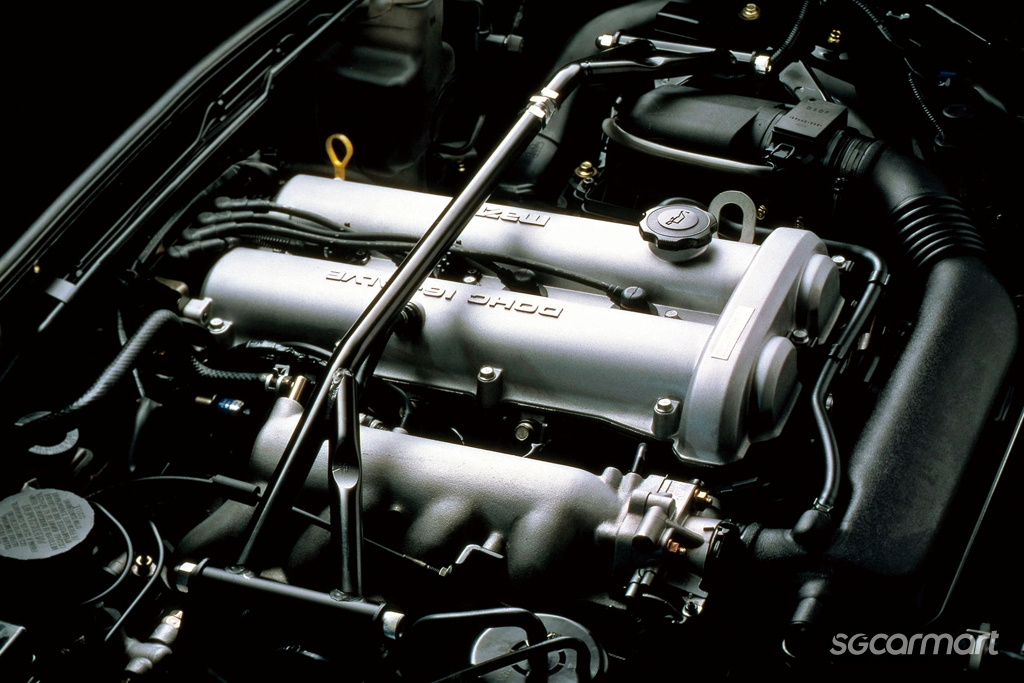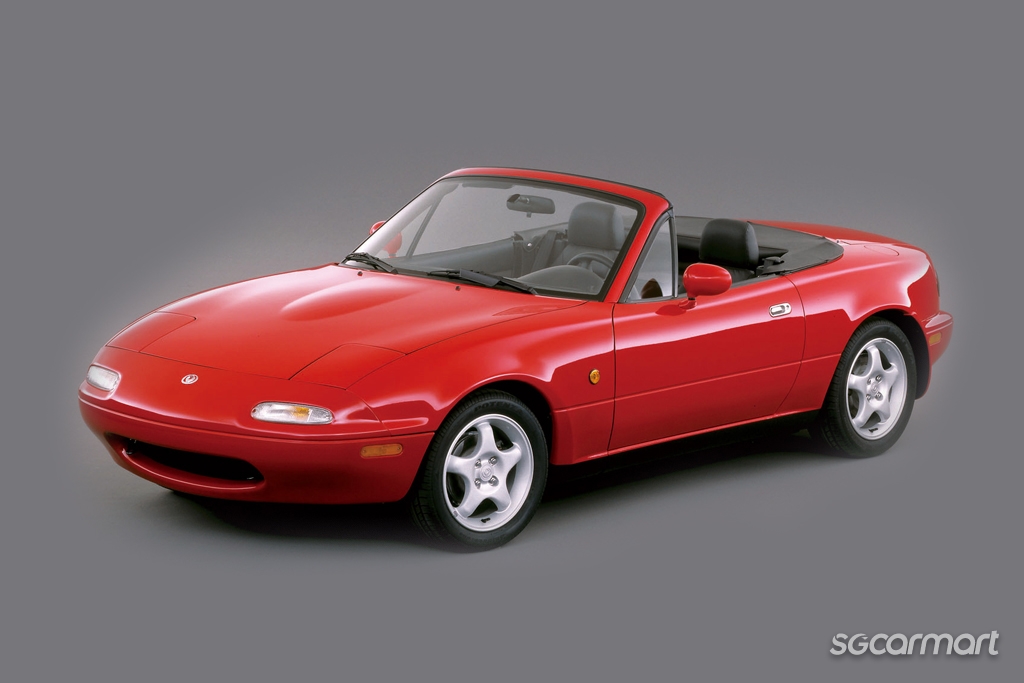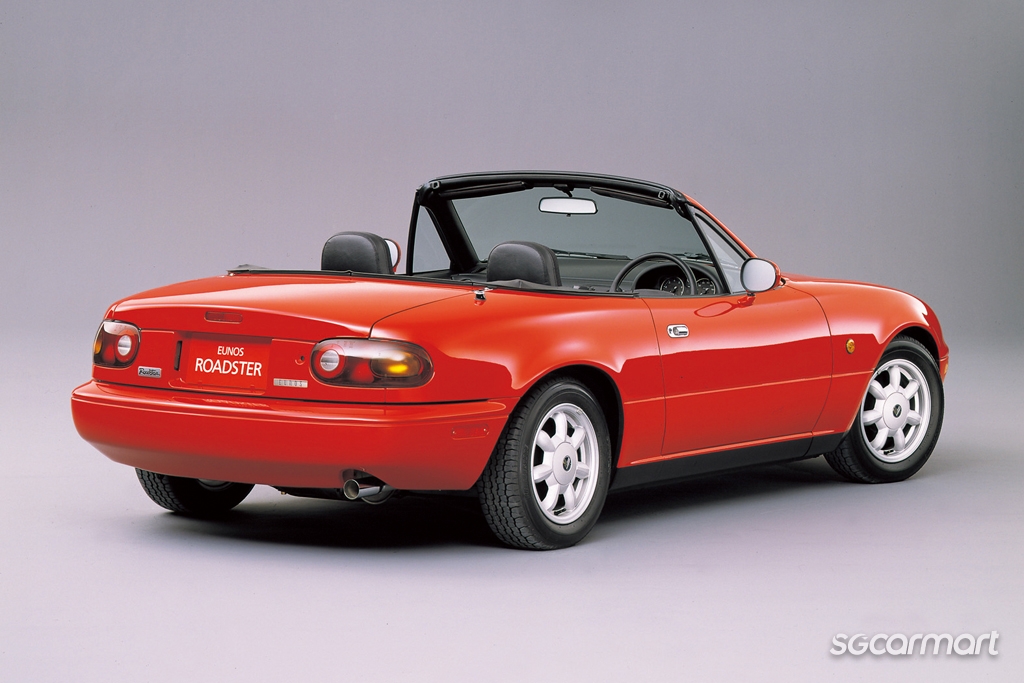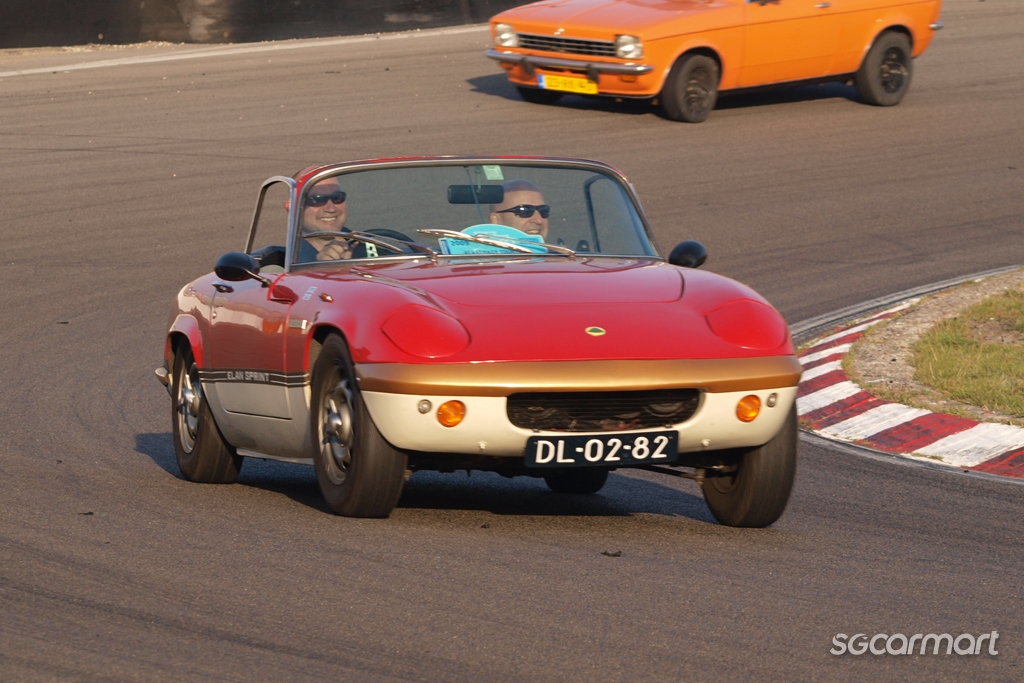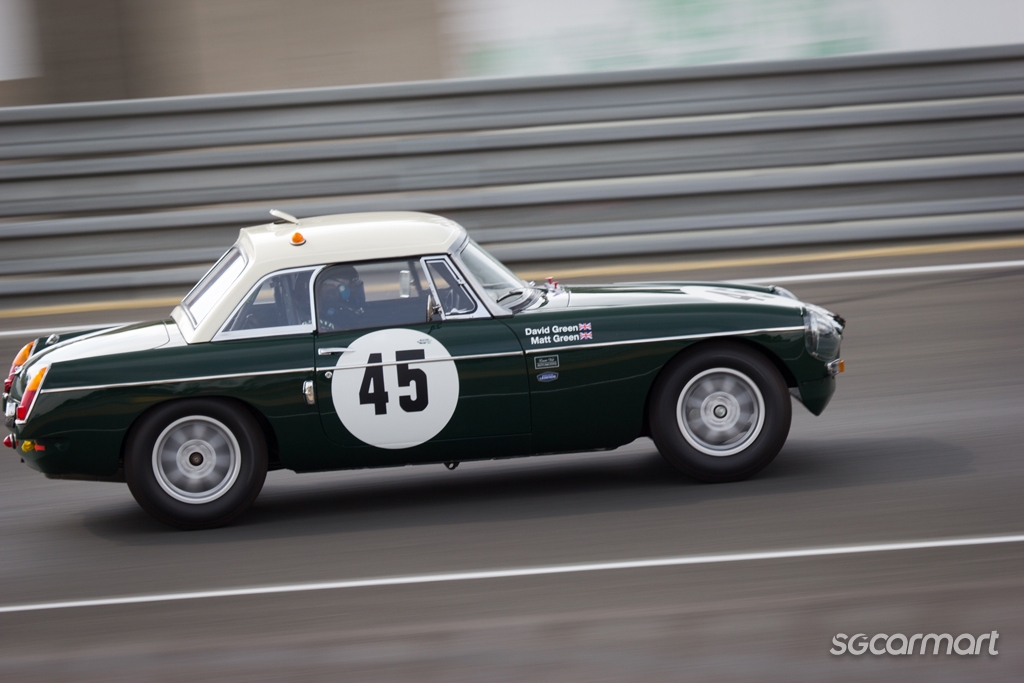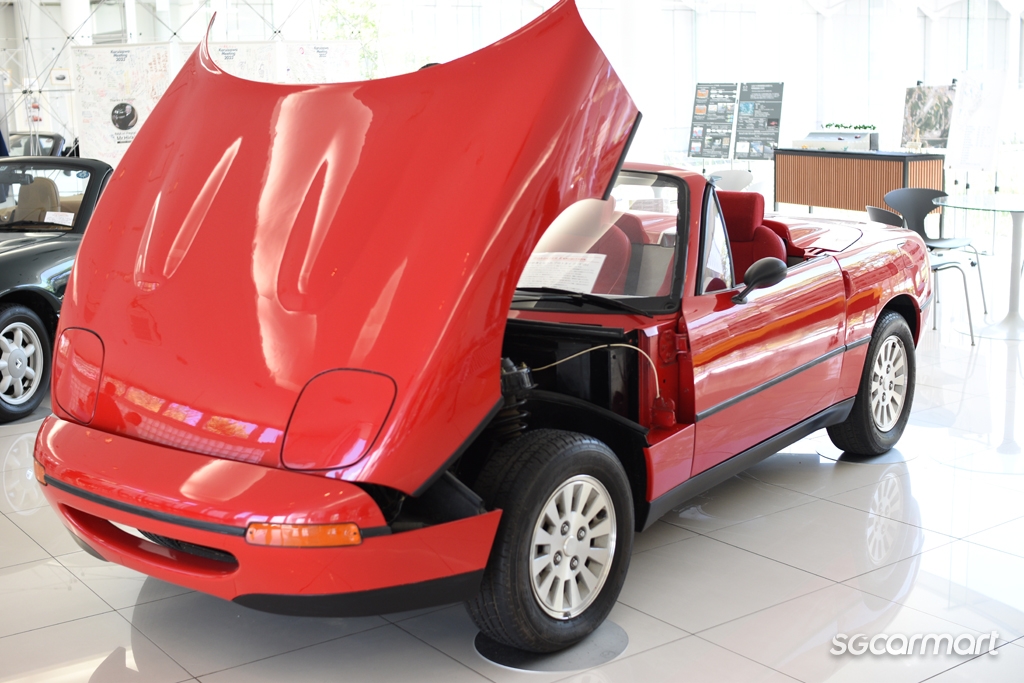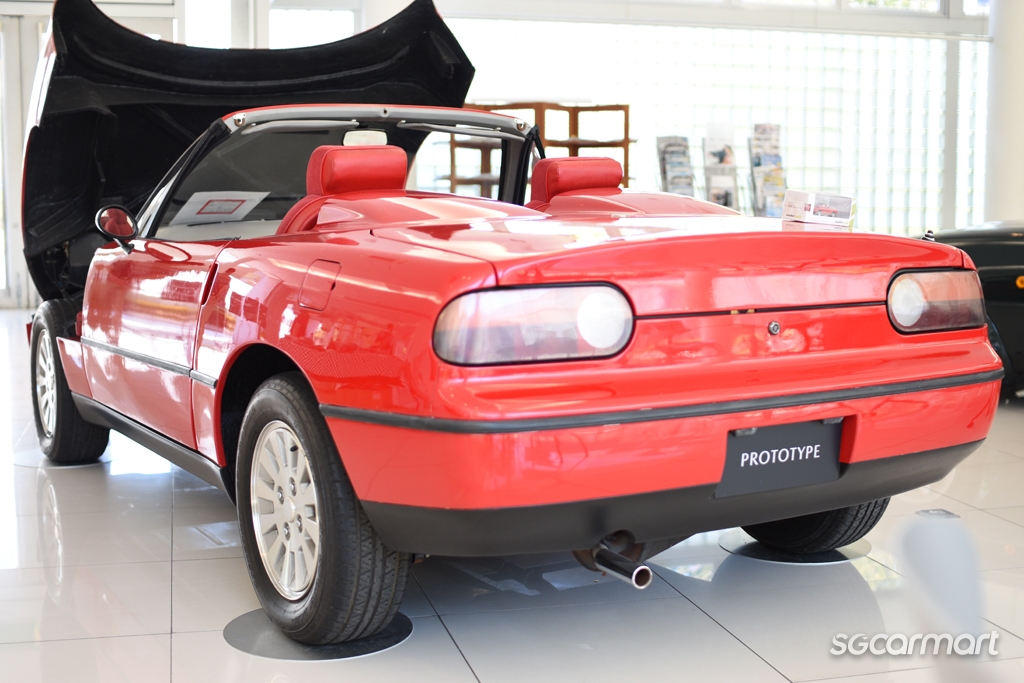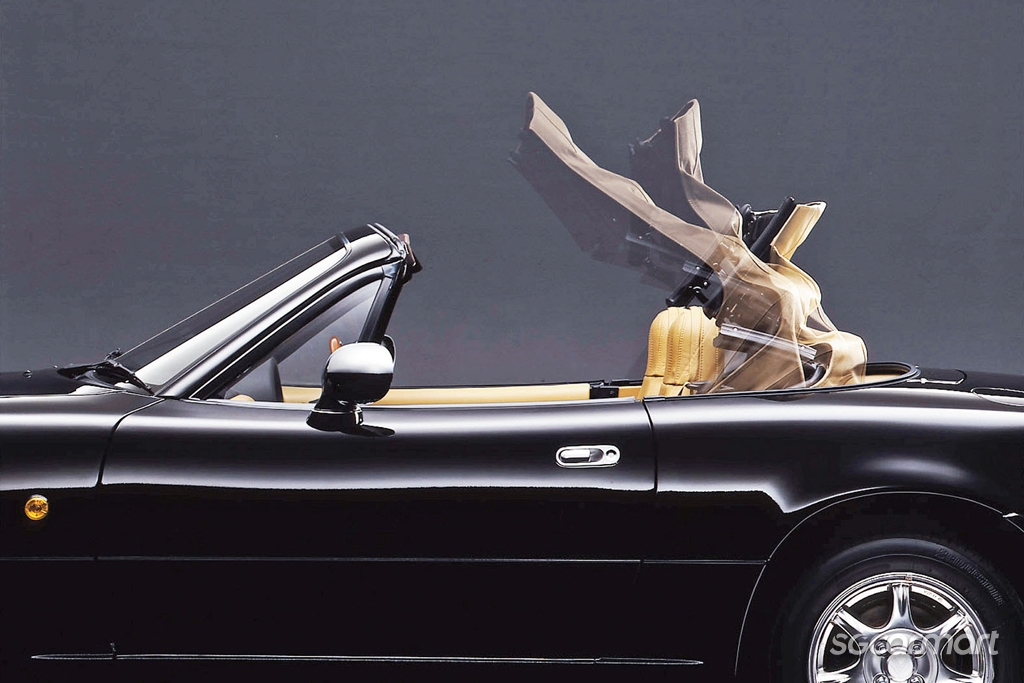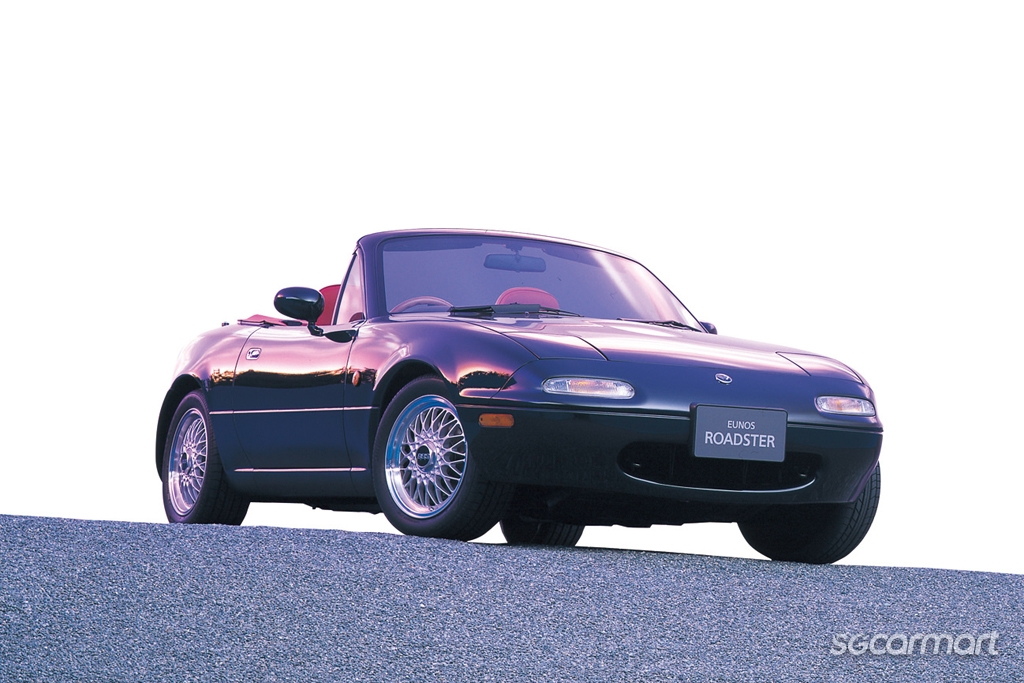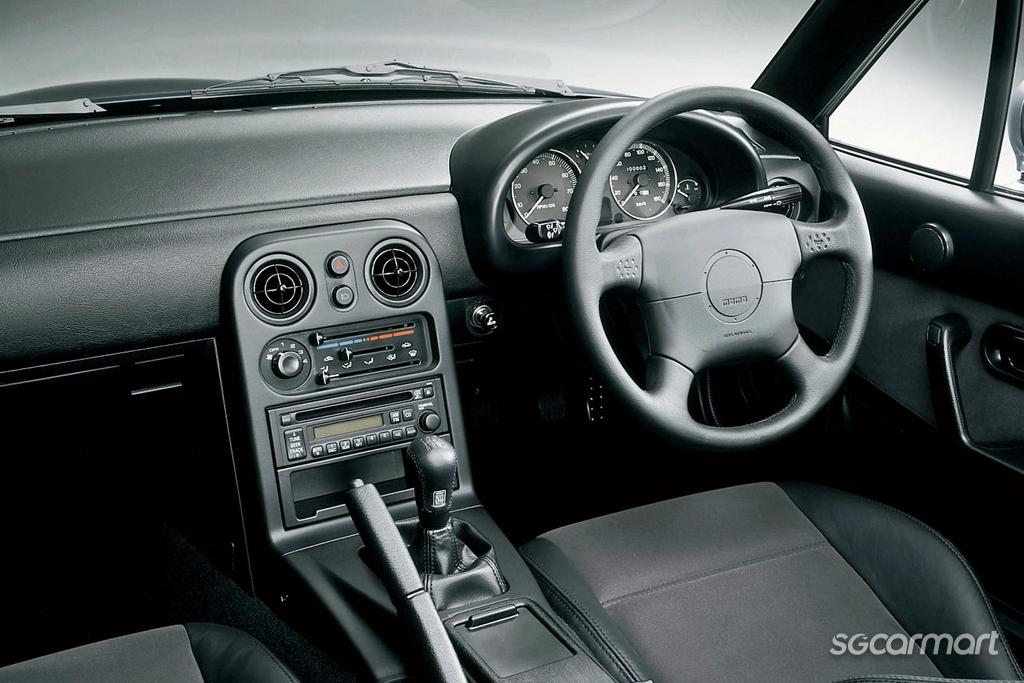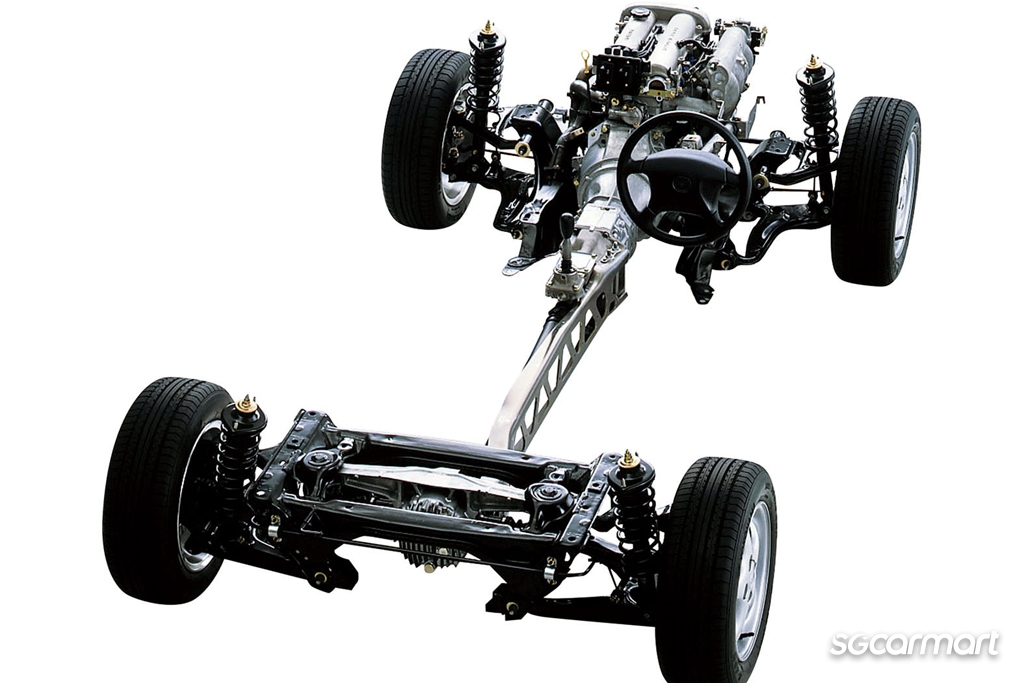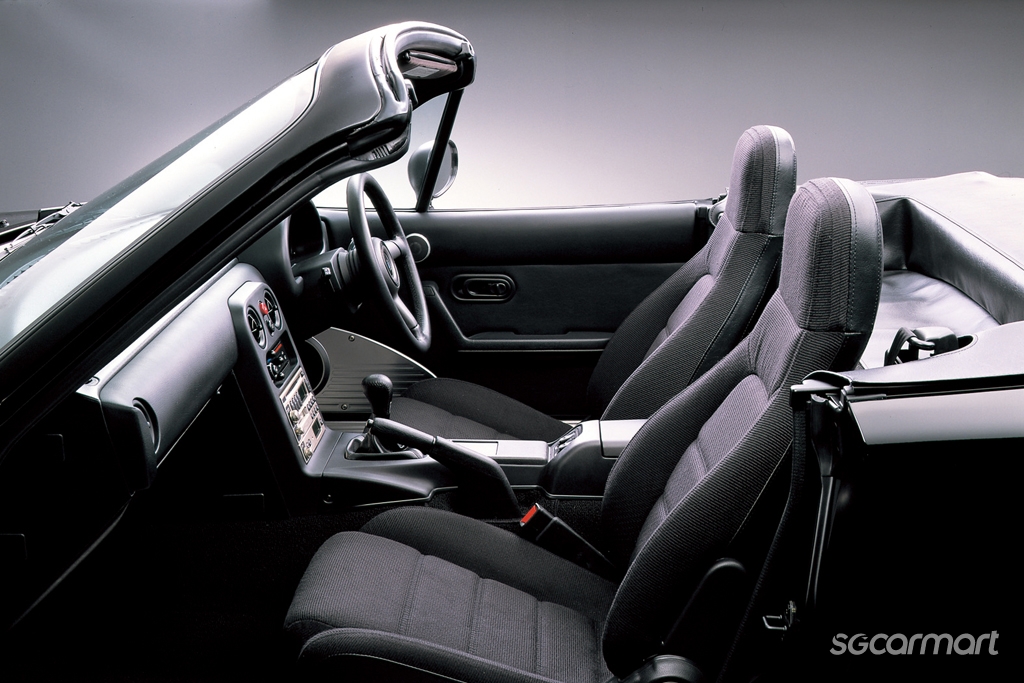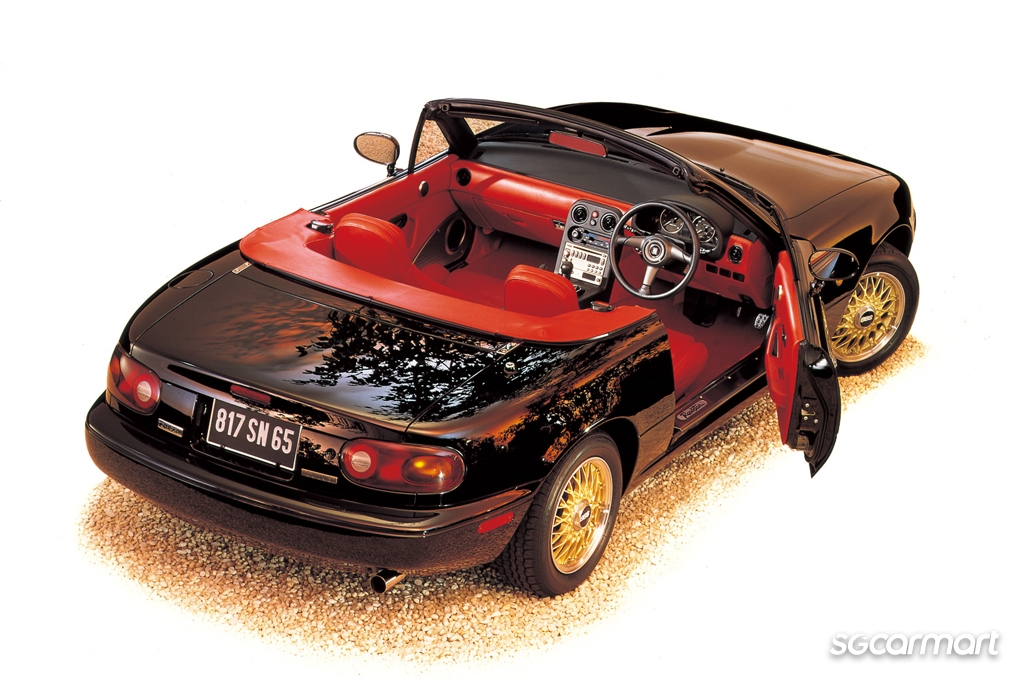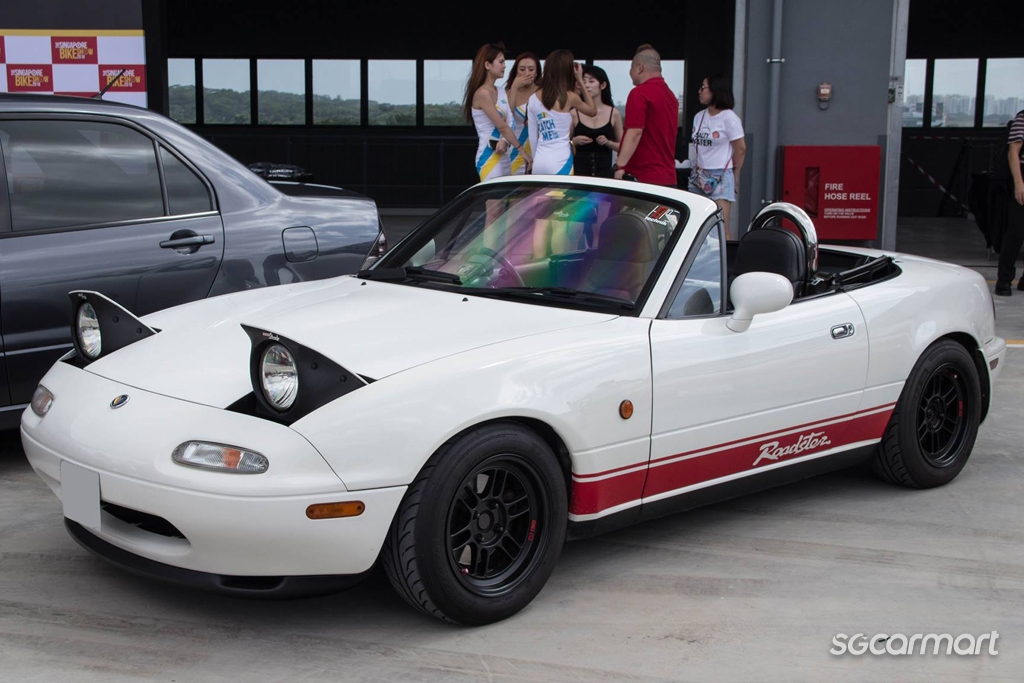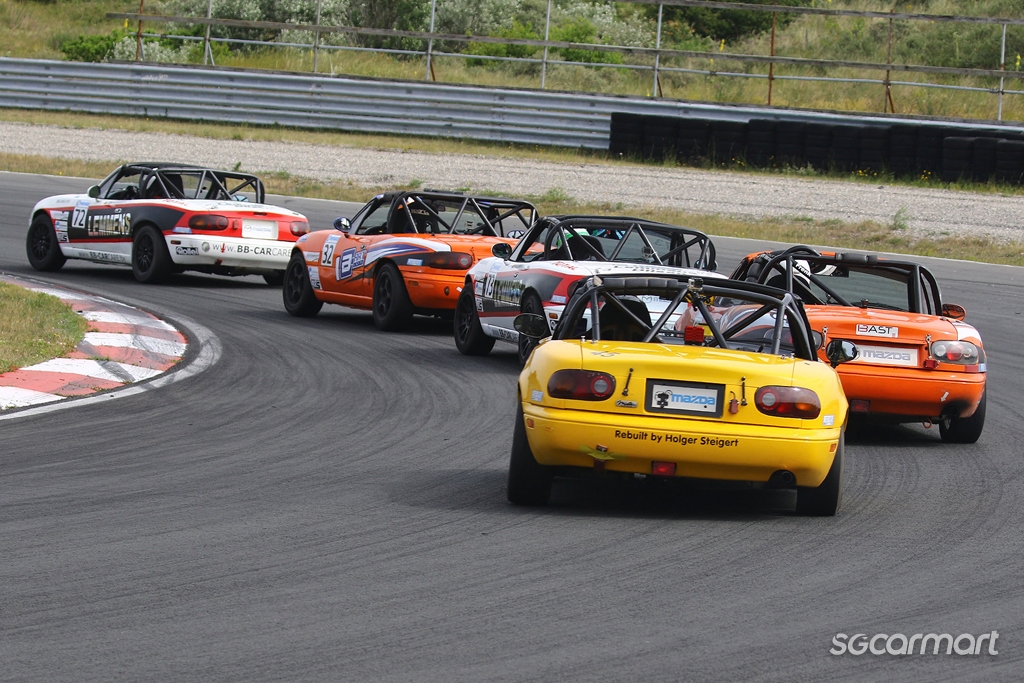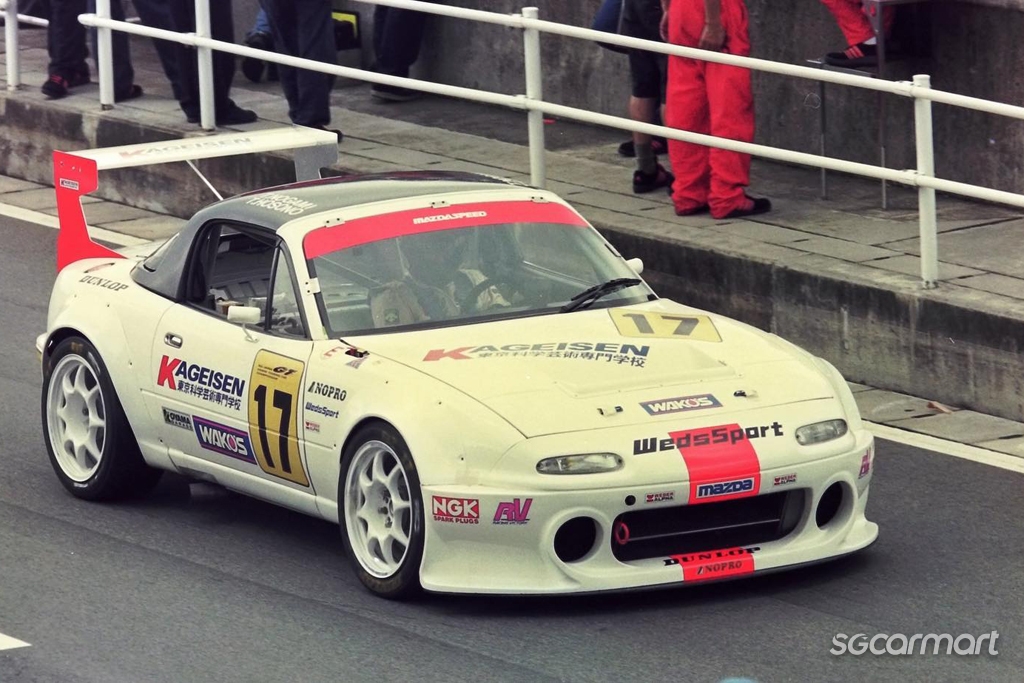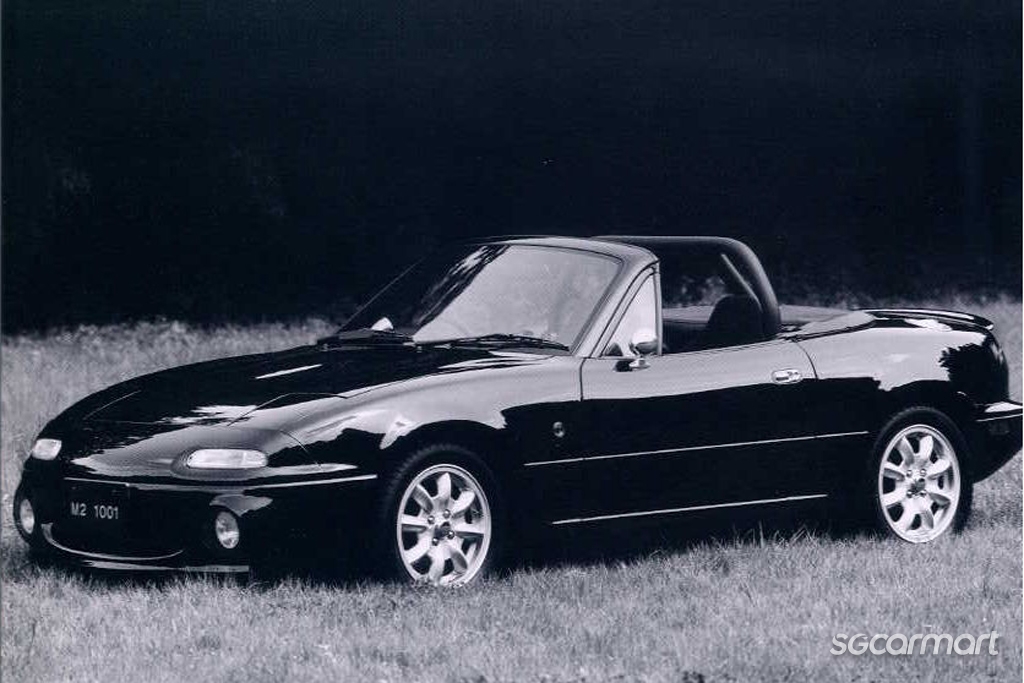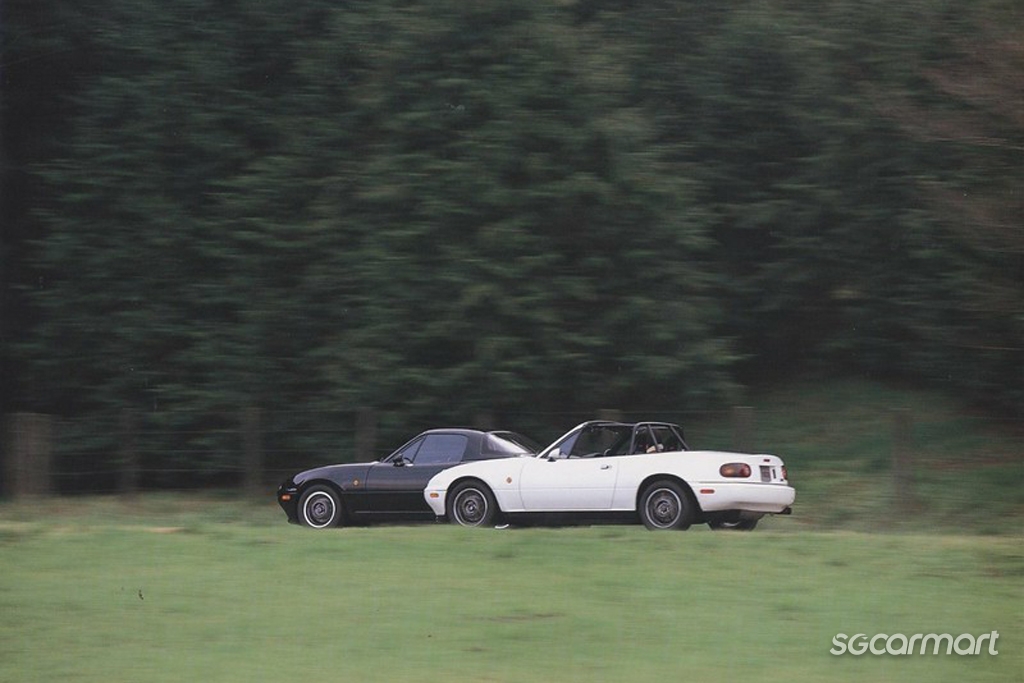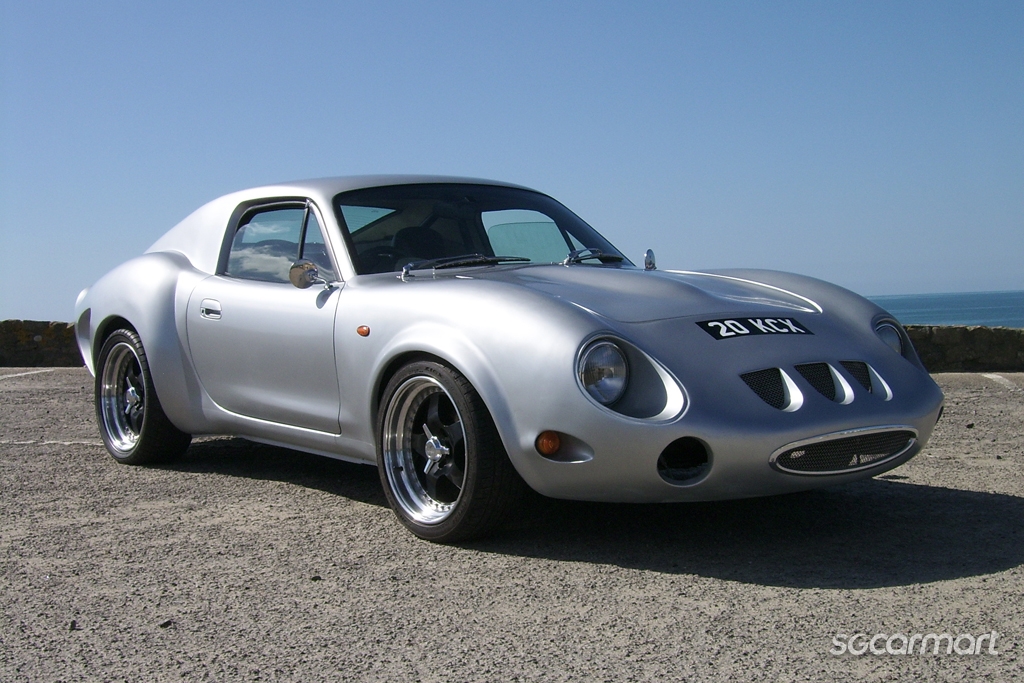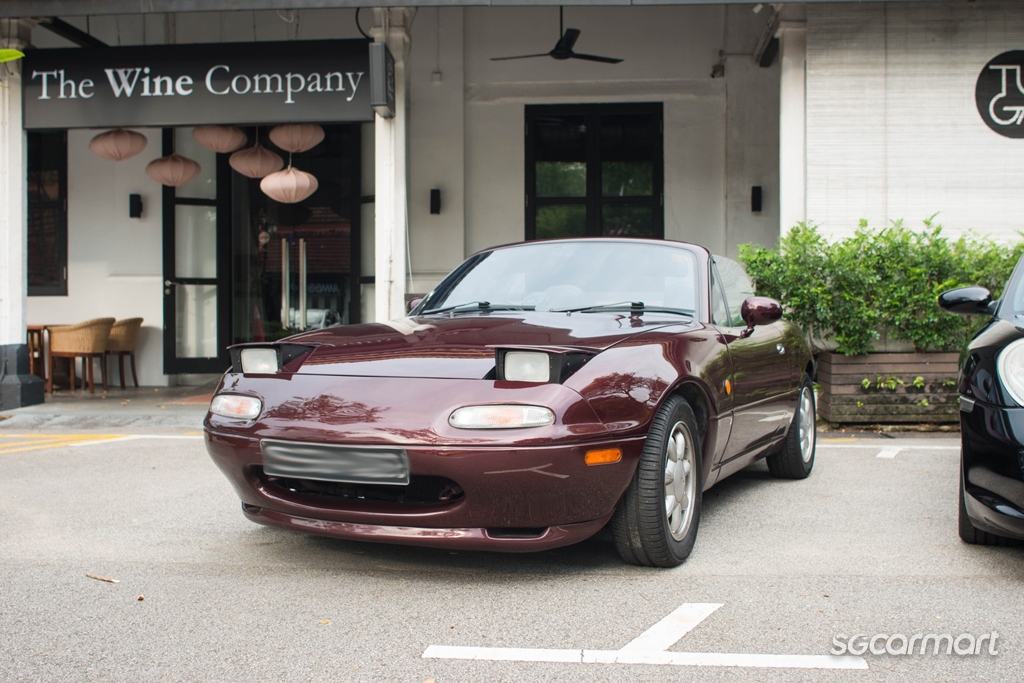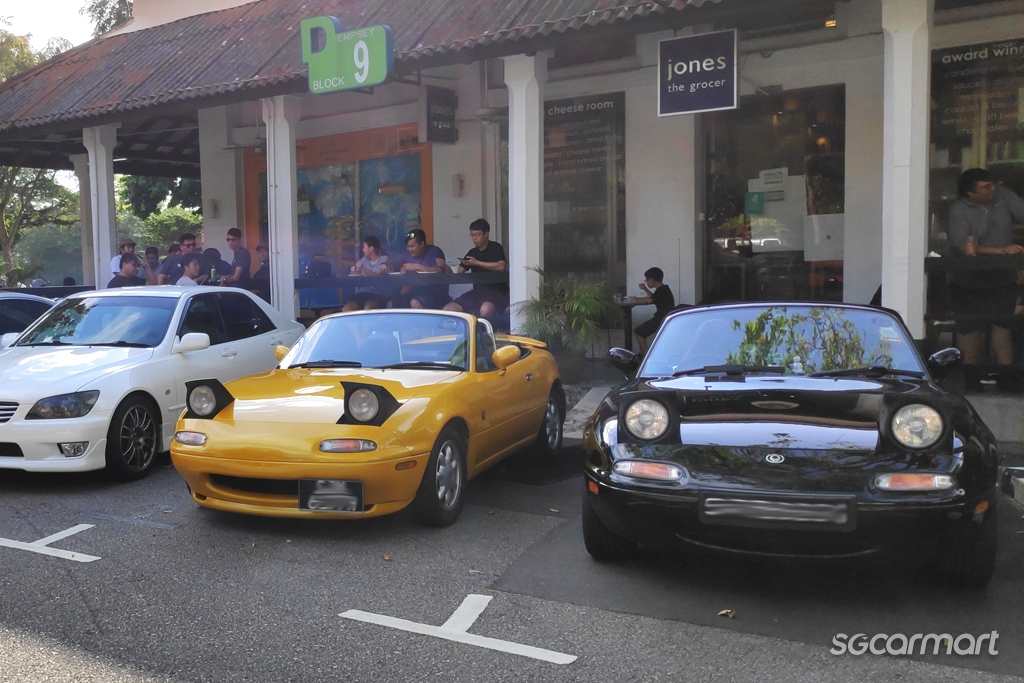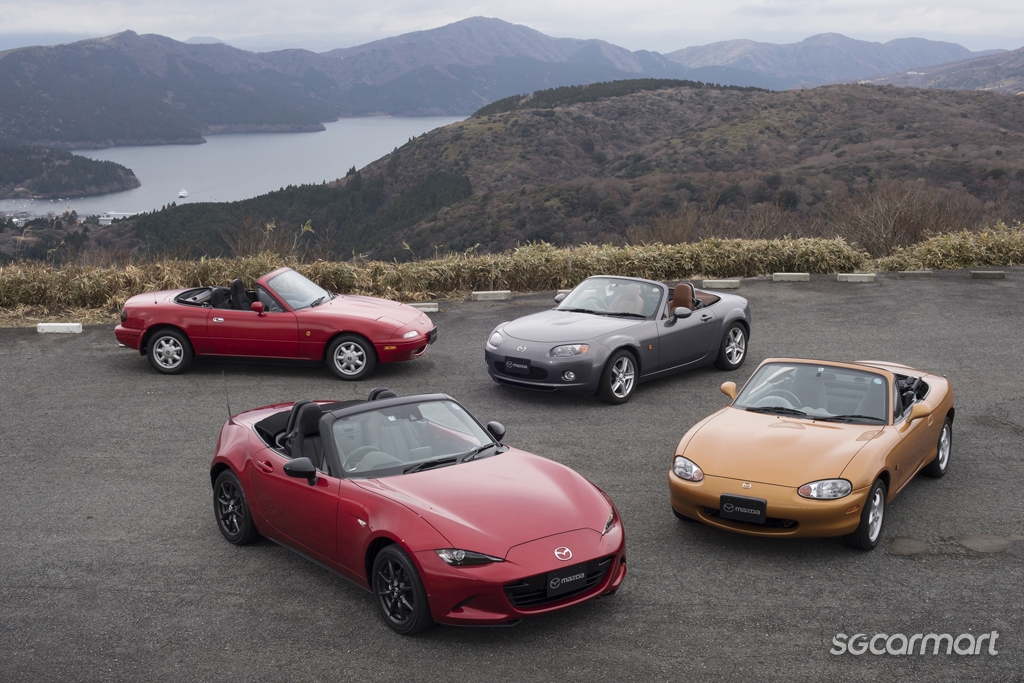Motoring Icons: JDM Legends - Mazda NA MX-5
11 Nov 2023|4,794 views
If you are to approach a random passerby and ask about their favourite car, chances are that it is a supercar from one of the Italian marques. Why then, are car enthusiasts interested in a small, affordable and low-powered Japanese roadster such as the Mazda MX-5?
One of the main reasons is the fact that the MX-5 was an affordable choice from new till the early 2000s. The first generation NA MX-5 also had a lovable styling, along with excellent handling and performance for a car of its price point. Naturally, the car quickly got the attention of car enthusiasts, and tuning companies - it sure helps that the 90s were the golden era for Japanese sports cars!
Powertrain
Engine: B6ZE (RS) 1,598cc in-line four Twin-Cam
Horsepower: 118bhp at 6,500rpm (JDM spec)
Torque: 136Nm at 5,500rpm
Drivetrain layout: Front-engine, rear-wheel drive
History of the Mazda NA MX-5
Introduced in 1989, the first generation Mazda MX-5, also called the Miata in the U.S.A and Eunos roadster in Japan (with the chassis code 'NA'), came at a time when there was a vacuum in the market for a simple and fun lightweight sports car.
One can consider the MX-5 as a spiritual successor to the fun lightweight British sports cars of the 60s
With the 70s being the period when strict safety and emissions regulations sandbagged the automotive industry in the U.S.A, enthusiasts in the 80s were left with the 60s' lightweight British sports cars such as the Lotus Elan and the MGB - that is until Mazda came up with the MX-5.
It all started when Mazda realised that they needed something fresh and attractive, something that stood apart from its existing lineup to capture even more market share. While many people had a hand in the birth of the MX-5, two men were widely credited for it - Bob Hall (an automotive journalist who went on to join Mazda's Irvine, California facility as a product planning manager), and Toshihiko Hirai, the chief developer of the first generation MX-5.
It was said that Bob Hall floated the original idea of his dream car, a lightweight convertible sports car that could easily be created with components from existing Mazda cars, to the head of Mazda's Research and Development back in 1979. In 1983, Mazda was looking at the possibility of a lightweight sports car to fit beneath the RX-7 in its lineup and got its two regional R&D centres to work on their own version. The U.S.A-based team's rear-wheel drive convertible concept beat the Tokyo team's front-wheel drive and mid-engine coupe concepts and eventually became the basis for the MX-5.
Toshihiko Hirai, a passionate engineer, was then appointed as the project program manager in 1986. He built a team with the sole aim of developing the lightweight sports car without compromise, during which the Jinba-ittai philosophy of the horse and rider as one was developed. To achieve this, the team insisted on a lightweight car with balanced weight distribution, a low centre of gravity, double-wishbone suspensions, and an easy-to-use soft top. All of these is to ensure the fun and driver-engaging aspects of the MX-5.
These characteristics that made the MX-5 a success has remained till the current generation of the MX-5.
Allure - A lightweight sports car with excellent handling
A lot of engineering and design went into the first generation MX-5 to make it truly fun and enjoyable to drive. To start off, a front-engine, rear-wheel drive layout was favoured over the simpler front-wheel drive to achieve the agile handling and dynamic drive that is associated with lightweight sports cars.
While the 1.6-litre naturally aspirated twin cam engine wasn't extremely powerful, it had a smooth power curve and provided a linear acceleration experience up to its rev limit of 7,500rpm. Paired with a five-speed manual transmission as standard, the engine propelled the sub-one tonne MX-5 to 0-100km/h in just 9.5 seconds.
The Powerplant Frame that connects the transmission to the rear differential is an essential technical element in all MX-5 models
The MX-5 also features a unique Powerplant Frame that rigidly connected the transmission to the rear differential to result in a tighter drivetrain, enhancing drive feel and performance - this feature also goes on to become an essential technical element in all subsequent MX-5 models. Choosing to stick with a pure two-seater layout, a manually operated soft top, along with an aluminium bonnet, allowed the MX-5 to be as light as possible. And lightness isn't the only trick Mazda had for this agile little roadster - with double wishbone suspension all round, it was poised to be a handling machine.
It sure helped that its design was well-received by potential car buyers - in 1987, a full-scale plastic body prototype was presented to 220 members of the public in the U.S.A and 57 responded that they "would definitely buy it if it hit the market". Two years later, the Mazda MX-5 debuted to become an instant success, triggering a number of other automakers to produce their own open-top sports car. It was certified by Guinness World Records as the world's highest production two-seat open top sports car in May 2000 - 531,890 units were produced between April 1989 and the end of October 1999.
Naturally, when the car enthusiasts got their hands on the MX-5, many started fettling with it to get even more performance out of it. Between its introduction and now, countless aftermarket upgrades have been produced for the MX-5.
Cultural significance - Miata Is Always The Answer
If you have been around automotive websites and forums, you are likely to have come across the phrase "Miata Is Always The Answer". This is often the response when someone is seeking for a recommendation for a fun and enjoyable car. And for a car to attain such cult status, it is clear that Mazda got some things very right.
Indeed, you'll likely have trouble finding another car that is so embroiled in car culture. The MX-5 is so popular, and produced in such a large quantity, that there are owners and enthusiasts all over the world who are very involved with enjoying these cars. As a result, there are countless online forums and Facebook groups dedicated to sharing knowledge, as well as tips and tricks on the upkeep and customisation of these cars.
Due to its affordability, combined with its nimble and agile performance, the MX-5 is also a weapon of choice in many grassroots motorsports events such as autocross, drifting and track days. In fact, there are even one-make race championships where the MX-5 are pitted against each other. These include Mazdaspeed Miata Cup launched in 2003, where both the first and second generation MX-5 Miatas were accepted. In later years, the Mazda MX-5 Cup featured the use of the third generation MX-5 between 2006 and 2015, and 2016 saw the introduction of the Global MX-5 Cup that features the MX-5 Cup car based on the fourth generation model.
Naturally, the MX-5 also received lots of love from aftermarket tuning companies. There are shops, such as Car Make Corn's and Nogami Project (NOPRO) that specialise in these cars, offering MX-5 specific products and upgrades ranging from aftermarket bodykits, engine components and drivetrain components, interior parts such as steering wheels and seats, as well as rims. You get the idea - these shops spends countless hours on research and development to improve these cars.
The M2-1001 'Cafe Racer' had a unique front bumper along with stiffer suspension and more power, among other tweaks
In the past, Mazda also had a skunkworks arm called M2 (also known as Mazda Too), which worked on creating niche and interesting cars out of existing Mazda products. Cars that M2 meddled with includes the Autozam AZ-1, as well as the first generation MX-5 - there were three variants (namely M2-1001, M2-1002 and M2-1028), and each model was unique and are limited to 300 units (though only 40 units of the M2-1002 were supposedly built).
The MX250 kit by Tribute Automotive is just one of many that converts the MX-5 into something that looks totally different
If you were to dig around online, you'll also see that there were many creative creations based on the MX-5, such as the MX250 by Tribute Automotive that converts the MX-5 into a Ferrari 250 GTO replica, the Zero Mazda by Great British Sports Cars that converts the MX-5 into a Lotus 7/Caterham 7 lookalike, along with many other kits.
Want an NA MX-5? You can still get one locally!
After reading all about the MX-5, I wouldn't be surprised if you want one for yourself now. The good news is that you'll still be able to get one as there are a couple of them for sale on the used car market. That said, with the scarcity of these cars in Singapore, the prices are no longer as affordable, so you have to really like the car to shell out the $18,000 - $24,000 depreciation for one that's currently on the market.
On the bright side, MX-5s are known to be reliable, and with the wide aftermarket and community support for these cars, keeping them running shouldn't be too difficult a task. And if you are attracted by what the original MX-5 stood for, you can also consider any of the newer generations that can also be found on the used car market.
Even if you aren't looking to buy one now, I hope this read would have enlightened you on why these cute little roadsters are so loved by enthusiasts.
Enjoyed reading about the Mazda MX-5? Here are some other articles that you might be interested in:
Motoring Icons: Homologation Specials - Toyota GR Yaris
Motoring Icons: Homologation Specials - BMW E30 M3
Motoring Icons: JDM Legends - Nissan Skyline Turbo RS-X DR30
If you are to approach a random passerby and ask about their favourite car, chances are that it is a supercar from one of the Italian marques. Why then, are car enthusiasts interested in a small, affordable and low-powered Japanese roadster such as the Mazda MX-5?
One of the main reasons is the fact that the MX-5 was an affordable choice from new till the early 2000s. The first generation NA MX-5 also had a lovable styling, along with excellent handling and performance for a car of its price point. Naturally, the car quickly got the attention of car enthusiasts, and tuning companies - it sure helps that the 90s were the golden era for Japanese sports cars!
Powertrain
Engine: B6ZE (RS) 1,598cc in-line four Twin-Cam
Horsepower: 118bhp at 6,500rpm (JDM spec)
Torque: 136Nm at 5,500rpm
Drivetrain layout: Front-engine, rear-wheel drive
History of the Mazda NA MX-5
Introduced in 1989, the first generation Mazda MX-5, also called the Miata in the U.S.A and Eunos roadster in Japan (with the chassis code 'NA'), came at a time when there was a vacuum in the market for a simple and fun lightweight sports car.
One can consider the MX-5 as a spiritual successor to the fun lightweight British sports cars of the 60s
With the 70s being the period when strict safety and emissions regulations sandbagged the automotive industry in the U.S.A, enthusiasts in the 80s were left with the 60s' lightweight British sports cars such as the Lotus Elan and the MGB - that is until Mazda came up with the MX-5.
It all started when Mazda realised that they needed something fresh and attractive, something that stood apart from its existing lineup to capture even more market share. While many people had a hand in the birth of the MX-5, two men were widely credited for it - Bob Hall (an automotive journalist who went on to join Mazda's Irvine, California facility as a product planning manager), and Toshihiko Hirai, the chief developer of the first generation MX-5.
It was said that Bob Hall floated the original idea of his dream car, a lightweight convertible sports car that could easily be created with components from existing Mazda cars, to the head of Mazda's Research and Development back in 1979. In 1983, Mazda was looking at the possibility of a lightweight sports car to fit beneath the RX-7 in its lineup and got its two regional R&D centres to work on their own version. The U.S.A-based team's rear-wheel drive convertible concept beat the Tokyo team's front-wheel drive and mid-engine coupe concepts and eventually became the basis for the MX-5.
Toshihiko Hirai, a passionate engineer, was then appointed as the project program manager in 1986. He built a team with the sole aim of developing the lightweight sports car without compromise, during which the Jinba-ittai philosophy of the horse and rider as one was developed. To achieve this, the team insisted on a lightweight car with balanced weight distribution, a low centre of gravity, double-wishbone suspensions, and an easy-to-use soft top. All of these is to ensure the fun and driver-engaging aspects of the MX-5.
These characteristics that made the MX-5 a success has remained till the current generation of the MX-5.
Allure - A lightweight sports car with excellent handling
A lot of engineering and design went into the first generation MX-5 to make it truly fun and enjoyable to drive. To start off, a front-engine, rear-wheel drive layout was favoured over the simpler front-wheel drive to achieve the agile handling and dynamic drive that is associated with lightweight sports cars.
While the 1.6-litre naturally aspirated twin cam engine wasn't extremely powerful, it had a smooth power curve and provided a linear acceleration experience up to its rev limit of 7,500rpm. Paired with a five-speed manual transmission as standard, the engine propelled the sub-one tonne MX-5 to 0-100km/h in just 9.5 seconds.
The Powerplant Frame that connects the transmission to the rear differential is an essential technical element in all MX-5 models
The MX-5 also features a unique Powerplant Frame that rigidly connected the transmission to the rear differential to result in a tighter drivetrain, enhancing drive feel and performance - this feature also goes on to become an essential technical element in all subsequent MX-5 models. Choosing to stick with a pure two-seater layout, a manually operated soft top, along with an aluminium bonnet, allowed the MX-5 to be as light as possible. And lightness isn't the only trick Mazda had for this agile little roadster - with double wishbone suspension all round, it was poised to be a handling machine.
It sure helped that its design was well-received by potential car buyers - in 1987, a full-scale plastic body prototype was presented to 220 members of the public in the U.S.A and 57 responded that they "would definitely buy it if it hit the market". Two years later, the Mazda MX-5 debuted to become an instant success, triggering a number of other automakers to produce their own open-top sports car. It was certified by Guinness World Records as the world's highest production two-seat open top sports car in May 2000 - 531,890 units were produced between April 1989 and the end of October 1999.
Naturally, when the car enthusiasts got their hands on the MX-5, many started fettling with it to get even more performance out of it. Between its introduction and now, countless aftermarket upgrades have been produced for the MX-5.
Cultural significance - Miata Is Always The Answer
If you have been around automotive websites and forums, you are likely to have come across the phrase "Miata Is Always The Answer". This is often the response when someone is seeking for a recommendation for a fun and enjoyable car. And for a car to attain such cult status, it is clear that Mazda got some things very right.
Indeed, you'll likely have trouble finding another car that is so embroiled in car culture. The MX-5 is so popular, and produced in such a large quantity, that there are owners and enthusiasts all over the world who are very involved with enjoying these cars. As a result, there are countless online forums and Facebook groups dedicated to sharing knowledge, as well as tips and tricks on the upkeep and customisation of these cars.
Due to its affordability, combined with its nimble and agile performance, the MX-5 is also a weapon of choice in many grassroots motorsports events such as autocross, drifting and track days. In fact, there are even one-make race championships where the MX-5 are pitted against each other. These include Mazdaspeed Miata Cup launched in 2003, where both the first and second generation MX-5 Miatas were accepted. In later years, the Mazda MX-5 Cup featured the use of the third generation MX-5 between 2006 and 2015, and 2016 saw the introduction of the Global MX-5 Cup that features the MX-5 Cup car based on the fourth generation model.
Naturally, the MX-5 also received lots of love from aftermarket tuning companies. There are shops, such as Car Make Corn's and Nogami Project (NOPRO) that specialise in these cars, offering MX-5 specific products and upgrades ranging from aftermarket bodykits, engine components and drivetrain components, interior parts such as steering wheels and seats, as well as rims. You get the idea - these shops spends countless hours on research and development to improve these cars.
The M2-1001 'Cafe Racer' had a unique front bumper along with stiffer suspension and more power, among other tweaks
In the past, Mazda also had a skunkworks arm called M2 (also known as Mazda Too), which worked on creating niche and interesting cars out of existing Mazda products. Cars that M2 meddled with includes the Autozam AZ-1, as well as the first generation MX-5 - there were three variants (namely M2-1001, M2-1002 and M2-1028), and each model was unique and are limited to 300 units (though only 40 units of the M2-1002 were supposedly built).
The MX250 kit by Tribute Automotive is just one of many that converts the MX-5 into something that looks totally different
If you were to dig around online, you'll also see that there were many creative creations based on the MX-5, such as the MX250 by Tribute Automotive that converts the MX-5 into a Ferrari 250 GTO replica, the Zero Mazda by Great British Sports Cars that converts the MX-5 into a Lotus 7/Caterham 7 lookalike, along with many other kits.
Want an NA MX-5? You can still get one locally!
After reading all about the MX-5, I wouldn't be surprised if you want one for yourself now. The good news is that you'll still be able to get one as there are a couple of them for sale on the used car market. That said, with the scarcity of these cars in Singapore, the prices are no longer as affordable, so you have to really like the car to shell out the $18,000 - $24,000 depreciation for one that's currently on the market.
On the bright side, MX-5s are known to be reliable, and with the wide aftermarket and community support for these cars, keeping them running shouldn't be too difficult a task. And if you are attracted by what the original MX-5 stood for, you can also consider any of the newer generations that can also be found on the used car market.
Even if you aren't looking to buy one now, I hope this read would have enlightened you on why these cute little roadsters are so loved by enthusiasts.
Enjoyed reading about the Mazda MX-5? Here are some other articles that you might be interested in:
Motoring Icons: Homologation Specials - Toyota GR Yaris
Motoring Icons: Homologation Specials - BMW E30 M3
Motoring Icons: JDM Legends - Nissan Skyline Turbo RS-X DR30
Thank You For Your Subscription.
























